Most user testing and research platforms treat users as static entities with fixed preferences. A mother evaluating your checkout flow at 6 AM operates from a completely different mental space than the same person at 11 PM. Evelance’s Emotional Intelligence recognizes this reality by modeling how circumstances shape reactions. Our system builds personas who carry their entire day with them when they encounter your design.
Consider what happens when someone who spent their morning dealing with a frozen bank account encounters your pricing page. Their heightened financial anxiety colors every element they see. The subscription model that might appeal during a confident moment now triggers protective instincts. Our Emotional Intelligence tracks these contextual pressures and adjusts each persona’s response accordingly. We factor in seventeen different environmental and psychological variables that range from recent online frustrations to ambient noise levels in their current setting.
The technology works through what we call emotional state modeling. Each persona maintains an active emotional baseline that shifts based on their simulated circumstances. A software developer who spent eight hours debugging code brings mental fatigue to their evaluation of your onboarding flow. Someone celebrating a recent promotion approaches your premium tier with expansive optimism. These emotional states aren’t random assignments but calculated responses to specific life situations we’ve programmed into each profile.
Emotional States That Drive Real Decisions
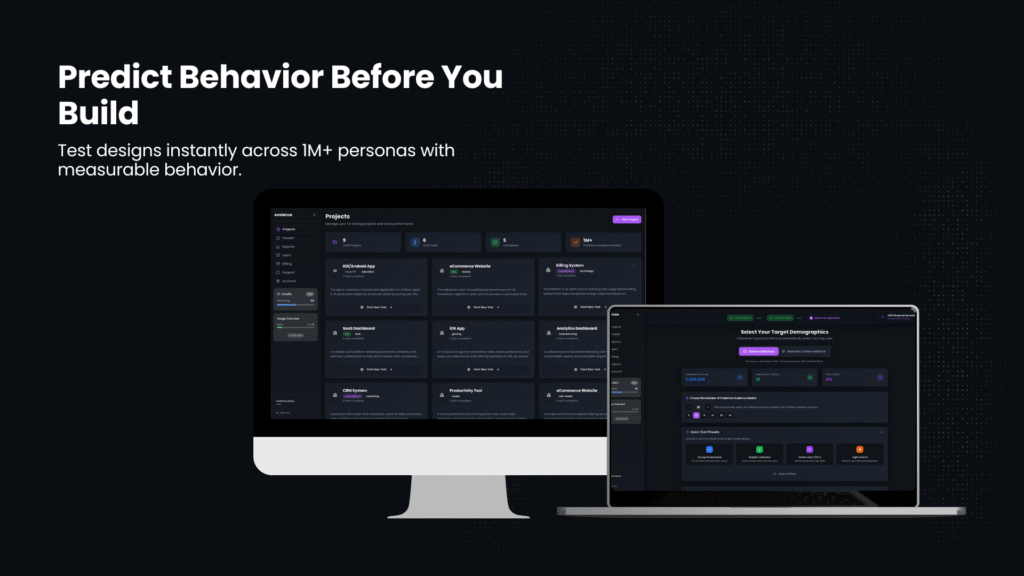
Traditional focus groups capture what people say they want. Evelance’s Emotional Intelligence reveals what people actually do when emotions run high. Our system models authentic emotional responses based on accumulated life patterns and immediate circumstances. Each reaction stems from a coherent psychological profile rather than isolated preference data.
Take someone recovering from identity theft six months ago. Their wariness about data collection isn’t theoretical but visceral. When they see your account creation form asking for personal details, their emotional response includes measurable anxiety markers. Our system tracks this through what we measure as Risk Evaluation scores, but the underlying mechanism goes deeper. The persona’s past trauma creates specific hesitation patterns that affect their entire interaction with your interface.
We model 12 emotional states that range from curiosity to skepticism, from urgency to patience. Each state influences how personas process information on your page. An exhausted parent evaluating your educational app at midnight after putting kids to bed won’t absorb complex value propositions. Their depleted attention reserves mean they need immediate clarity about benefits. Our Emotional Intelligence adjusts their cognitive load capacity based on these factors, producing feedback that matches their realistic mental state.
The emotional modeling extends to positive states too. Someone who received good financial news that morning approaches purchase decisions with measured confidence. Their elevated mood doesn’t make them reckless but changes their risk calculations. They might tolerate a longer sign-up process or accept a higher price point because their emotional buffer allows for greater flexibility. Our system captures these nuanced shifts through continuous emotional state tracking.
Memory and History Shape Present Reactions
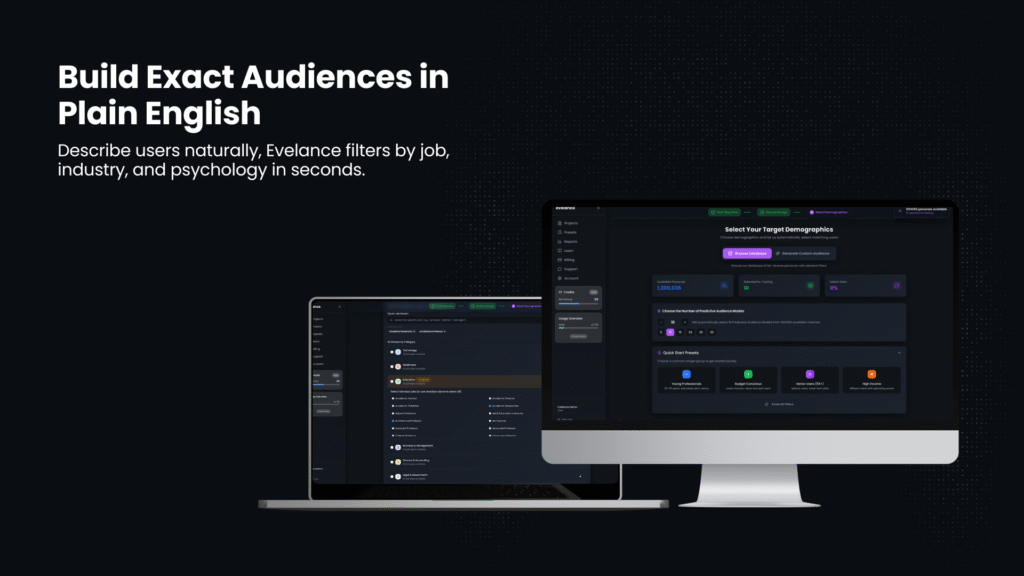
People don’t arrive at your website as blank slates. They bring years of accumulated online interactions, both positive and negative. Evelance’s Emotional Intelligence incorporates these historical patterns into every persona’s response framework. A small business owner who lost money to a misleading software subscription three years ago still carries that caution forward. Their evaluation of your trial offer includes this defensive memory even if they don’t consciously recall the specific incident.
Our Deep Behavioral Attribution system maintains detailed backstories for each persona that influence their present-moment reactions. These aren’t generic user stories but specific sequences of events that create authentic behavioral patterns. Someone who grew up watching their parents struggle with technology approaches your interface with inherited skepticism about ease-of-use claims. Another persona whose career advanced through early adoption of new tools brings opposite assumptions to the same design.
The memory modeling includes recent and distant events with appropriate weight given to each. A bad customer service call yesterday creates immediate hesitation about your contact options. A pattern of positive experiences with subscription services over several years builds baseline trust for your pricing model. We calculate these influences through temporal decay algorithms that reduce but don’t eliminate the impact of past events over time.
Personal victories and setbacks alter how people interpret design elements. A recent job loss makes someone scrutinize cancellation policies more carefully. Successfully learning a complex app last month increases their tolerance for sophisticated features. Our Emotional Intelligence tracks these confidence fluctuations and adjusts each persona’s willingness to engage with various interface complexities.
Environmental Factors That Change Everything
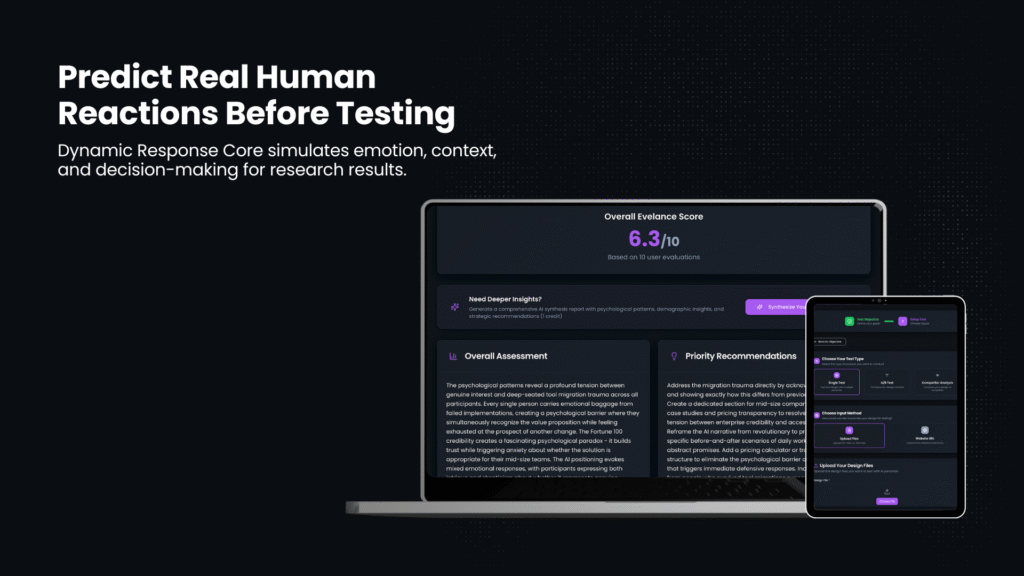
Physical and digital environments profoundly affect how people process information, yet most testing ignores these variables. Evelance’s Emotional Intelligence simulates environmental pressures that alter perception and decision-making. Someone evaluating your landing page in a noisy coffee shop with intermittent WiFi has different patience thresholds than someone browsing from a quiet home office.
We model lighting conditions because they affect cognitive performance. Harsh fluorescent office lighting creates subtle stress that reduces tolerance for complex layouts. Warm evening light at home promotes relaxed exploration of features. Our personas adjust their attention patterns and emotional responses based on these environmental inputs. The same design element might feel overwhelming under poor conditions but engaging in optimal settings.
Time pressure fundamentally changes how people interact with interfaces. Our Emotional Intelligence distinguishes between someone with five minutes before a meeting and someone with an open evening ahead. The rushed persona skips detailed explanations and seeks immediate value confirmation. The relaxed browser engages with storytelling elements and explores secondary features. These aren’t personality differences but situational adaptations that any real user would exhibit.
Social context matters too. Personas evaluating your design while others might look over their shoulder respond differently than those in private settings. Public browsing triggers concerns about status perception and privacy. Someone considering your dating app while at work shows different engagement patterns than the same persona at home. Our system factors in these social dynamics to produce contextually appropriate responses.
Stress and Pressure as Design Filters
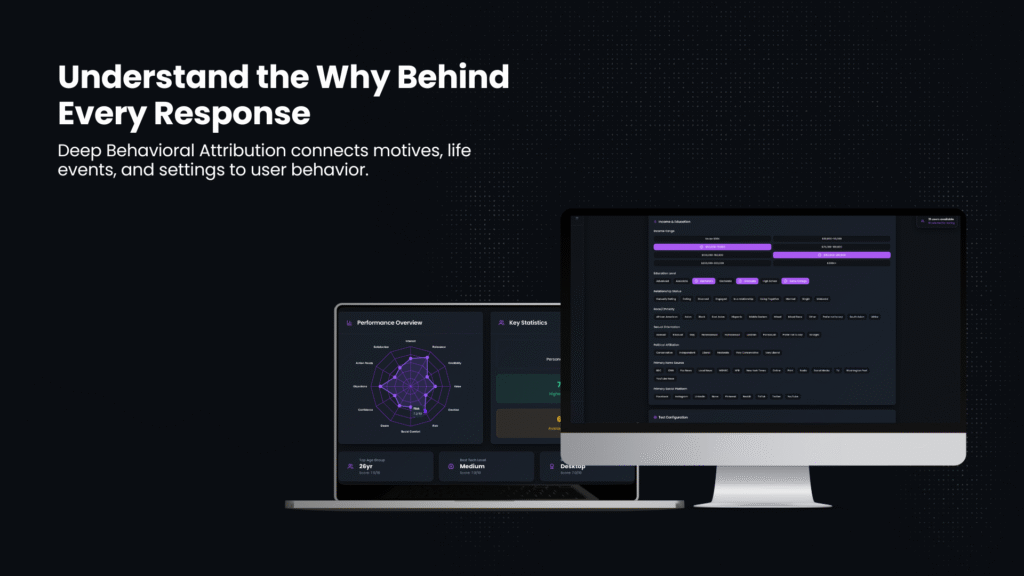
Stress acts as a lens that distorts how people perceive designs. Evelance’s Emotional Intelligence models various stress types and their specific effects on user behavior. Financial stress makes people hypersensitive to pricing details and hidden costs. Time stress reduces their ability to process multiple options. Social stress from peer judgment affects their willingness to share or recommend.
Consider how chronic stress from caregiving responsibilities changes someone’s interaction patterns. They need interfaces that minimize cognitive load because their mental resources are already stretched. Long forms feel insurmountable. Multiple steps trigger abandonment. Our Emotional Intelligence captures this depleted state and shows how it affects every interaction from initial interest through completion.
Acute stress from immediate problems creates different distortions. Someone dealing with a technical crisis at work brings heightened irritability to your support page design. Their reduced patience means unclear navigation triggers stronger negative responses. Minor friction points that others might overlook become breaking points for stressed users. We model these amplified reactions to show how your design performs under realistic emotional pressure.
Recovery from stress also influences behavior. People emerging from stressful periods often seek simplicity and clarity as they rebuild cognitive reserves. Their temporary vulnerability makes trust signals especially important. Our personas in recovery states show heightened sensitivity to credibility markers and security assurances. They need designs that feel safe and predictable rather than innovative or challenging.
Cultural and Personal Values in Action
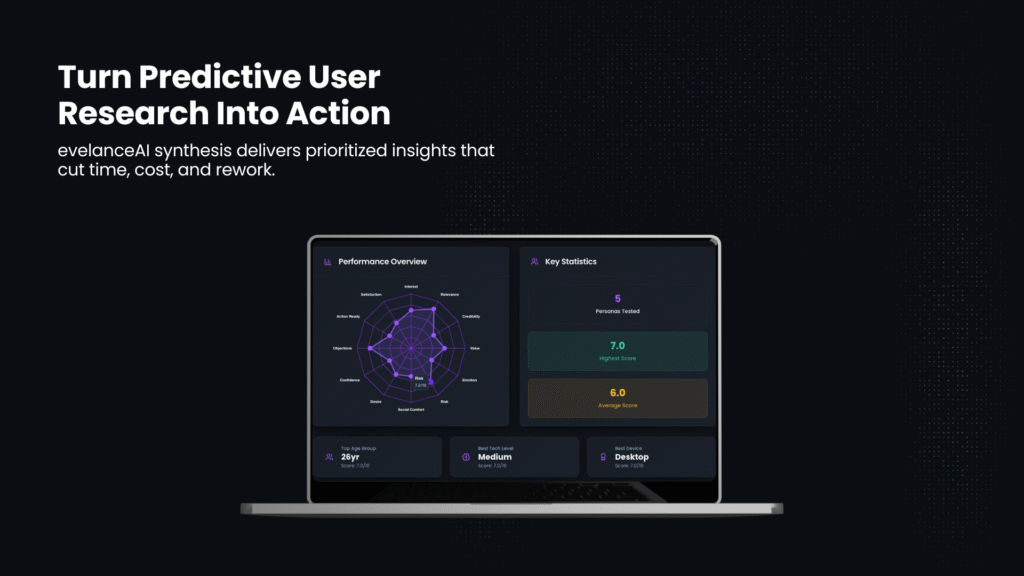
Values aren’t abstract preferences but active filters that shape every interaction. Evelance’s Emotional Intelligence embeds value systems into personas that affect how they interpret design choices. Someone who prioritizes environmental responsibility scrutinizes your company’s sustainability messaging with particular attention. Privacy advocates examine data collection practices through a suspicious lens regardless of your security badges.
These value systems create specific behavioral patterns. A persona who values efficiency becomes frustrated by decorative animations that slow task completion. Someone who prizes human connection responds negatively to overly automated communication options. Our system doesn’t treat these as simple preferences but as deeply held beliefs that color entire interactions. The efficiency-focused user doesn’t simply prefer faster processes; they interpret delays as disrespect for their time.
Personal values interact with situational needs to create complex responses. A normally patient person who values thoroughness might become impatient when time pressure overrides their usual preferences. Our Emotional Intelligence models these value conflicts and shows which force wins under different conditions. The parent who usually researches everything might accept quick decisions when their child needs immediate help.
Professional values learned through work experience shape consumer behavior. An accountant brings precision expectations to your pricing display. A designer notices typography choices that others ignore. A teacher evaluates your educational claims through pedagogical frameworks. Our personas carry these professional lenses that affect how they process information outside their work context.
The Compound Effect of Multiple Emotions
Real people rarely feel single emotions in isolation. Evelance’s Emotional Intelligence models how multiple emotional states interact and influence each other. Excitement about a potential purchase mixes with anxiety about spending. Hope for solving a problem combines with skepticism about marketing claims. These emotional combinations create nuanced responses that pure demographic data can’t predict.
We track how emotions build on each other throughout an interaction. Initial curiosity might grow into genuine interest, then hit a wall of doubt at pricing. Or skepticism might gradually transform into trust as credibility signals accumulate. Our system shows these emotional progressions through your entire user flow. Each step either reinforces or challenges the emotional momentum from previous steps.
Conflicting emotions create particular behavioral patterns. Someone simultaneously wanting a product but distrusting online shopping shows specific hesitation signatures. They might add items to cart but abandon at payment. They might research extensively but never commit. Our Emotional Intelligence captures these push-pull dynamics that frustrate conversion efforts. The persona reveals not indecision but active emotional conflict that needs resolution.
Background emotions from life circumstances blend with immediate reactions to create compound effects. Baseline happiness from personal success makes someone more generous in their design evaluation. Underlying sadness from loss makes them seek connection and meaning in unexpected places. These emotional layers don’t replace immediate responses but modify them in subtle ways our system tracks and reports.
Closing Thoughts
Evelance’s Emotional Intelligence transforms static user testing into dynamic behavioral prediction. We recognize that people bring their whole lives to every interaction with your design. Their reactions stem from accumulated experiences, current circumstances, and active emotional states that traditional testing methods ignore. Our system models these complex human realities to show how actual people will respond when they encounter your interface in their natural context, not in artificial testing environments.
The depth of our emotional modeling means you see beyond surface preferences to understand why people react as they do. Each persona’s response connects to specific life situations, emotional states, and environmental factors that shape their behavior. This understanding enables design decisions based on human psychology rather than demographic assumptions. You learn not only what works but why it works for specific people in particular moments.


 Oct 11,2025
Oct 11,2025 